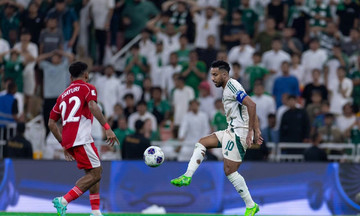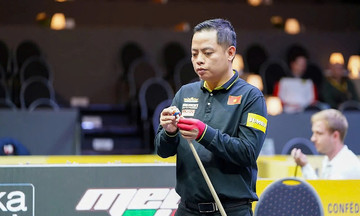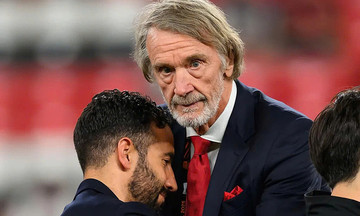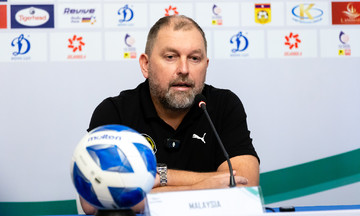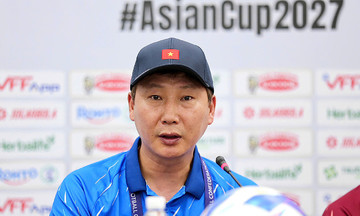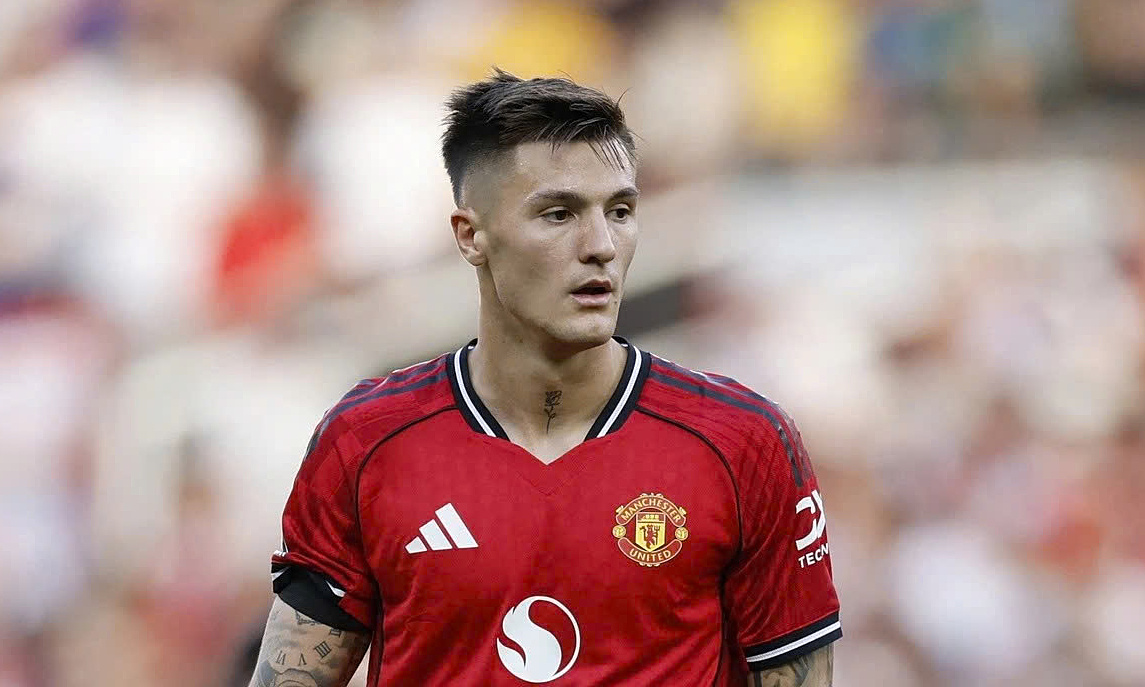 |
Sesko playing for Man Utd in the 2025-2026 Premier League season. Photo: Reuters |
Sesko has only played 5 games for the "Red Devils", totaling 282 minutes. He missed part of the preseason due to Leipzig's negotiations with several Premier League clubs before finalizing the deal with Man Utd. Therefore, a slow start isn't surprising for the Slovenian striker.
In the Manchester derby at the Etihad on 14/9, Sesko made his first Premier League start with Mason Mount and Matheus Cunha injured. He consistently played on the shoulder of Man City's last line of defense, looking to use his speed and strength to get past defenders where he felt he had an advantage.
This is a key element of Sesko's style. When he's on the pitch, he often positions himself in the center-backs' blind spots, ready to receive through balls. When the ball is played out wide, the Slovenian striker tends to move away from the taller center-backs towards the flanks, where he can challenge the smaller full-backs in aerial duels.
During his brief 26 minutes against Arsenal, Sesko constantly sought space between Gabriel and Riccardo Calafiori. Against Fulham, he targeted the gap between Joachim Andersen and Calvin Bassey, particularly looking to exploit Bassey's side. Matches against Grimsby Town and Burnley also demonstrated the 22-year-old's familiar movement: positioning himself between the two center-backs, then making runs when teammates attack down the wings.
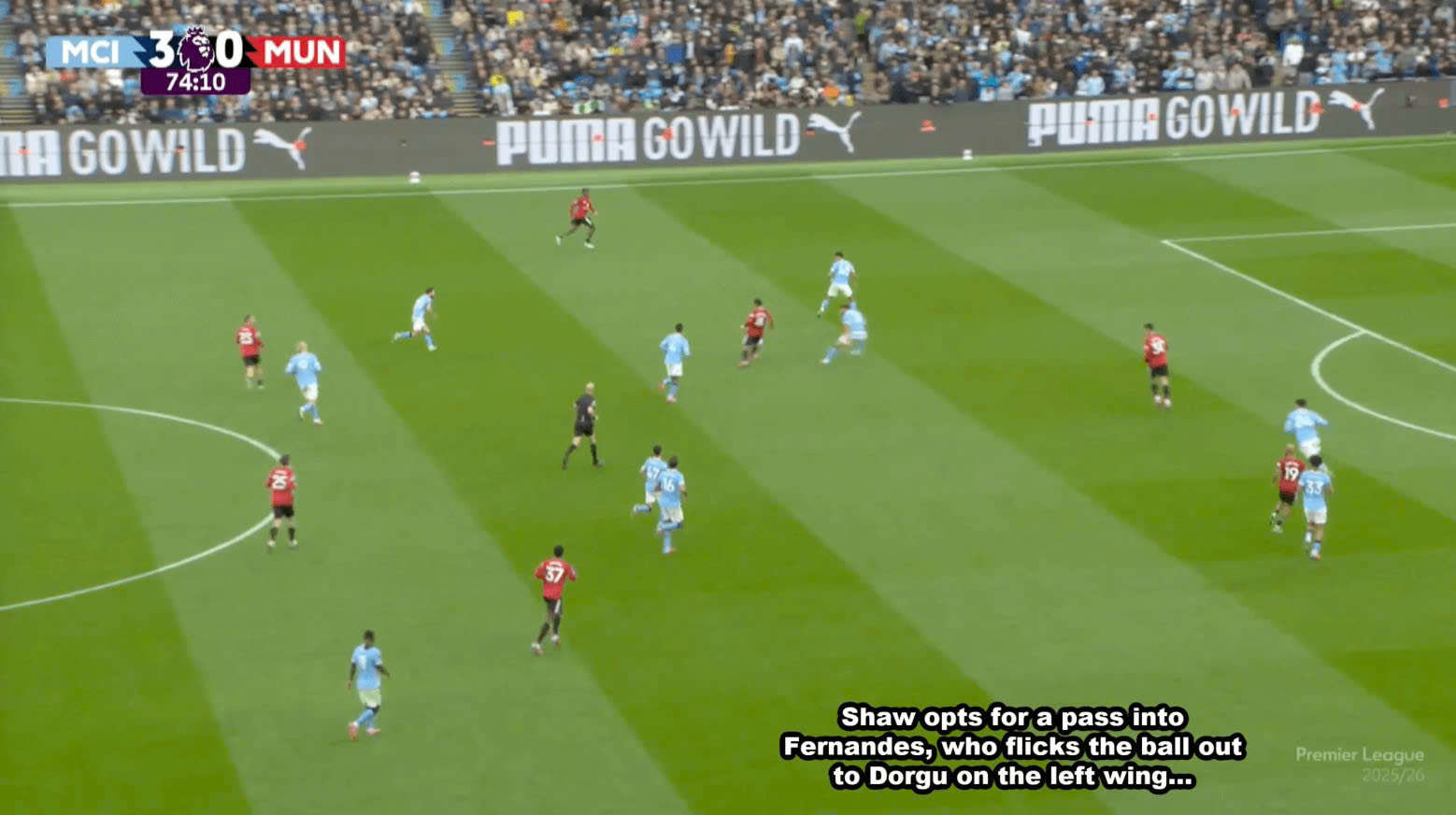 |
A situation where Sesko found space between Man City's center-backs, but didn't receive a pass from Luke Shaw. Photo: Athletic |
This movement indicates that Sesko is doing the basics of a center-forward correctly. He actively seeks the weakest link in the opponent's defense and waits for the opportunity to capitalize.
Despite his intelligent positioning, Sesko hasn't received the necessary support. Man Utd frequently struggle with their final ball in the attacking third. Sesko averages 2.2 shots per 90 minutes, fifth-most on the team, behind Bryan Mbeumo, Cunha, Bruno Fernandes, and Amad Diallo.
The new attacking trio of Cunha, Mbeumo, and Sesko haven't had much time to play together. With limited chemistry, opposing midfielders can easily cut off the supply to the center. Fulham succeeded by having Bassey closely mark Mbeumo, starving Sesko of service. The derby against Man City was even more challenging, as Pep Guardiola's tactics emphasized midfield dominance to disrupt the link between Man Utd's midfielders and forwards.
This results in Sesko having a limited heatmap. He still looks for the ball in and around the penalty area, but opportunities to receive it in advantageous positions are rare. Statistics show that Sesko's touches per game are typically low, around 13, and rarely in scoring positions.
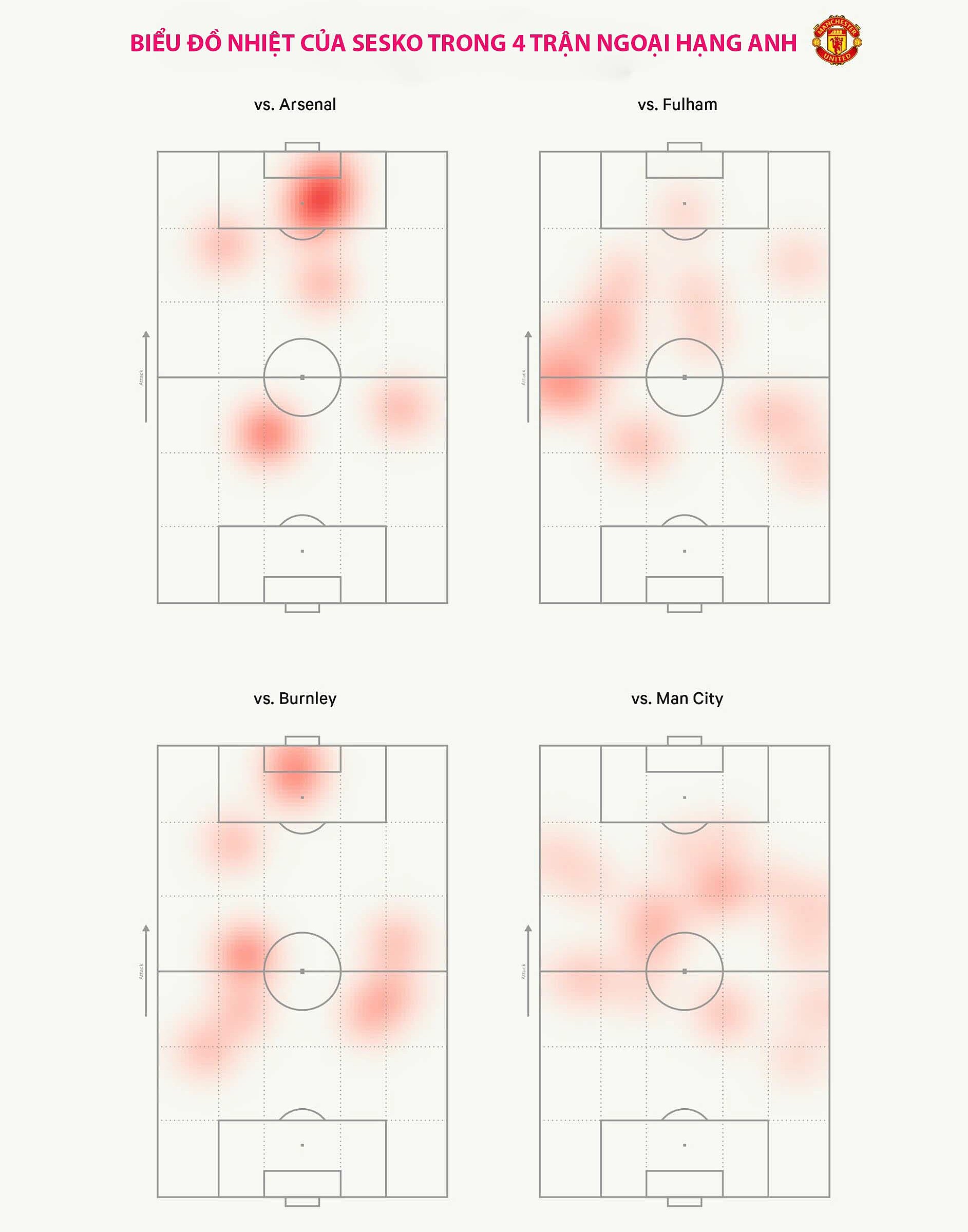 |
Sesko's heatmap, showing where he touched, passed, and shot the ball. Photo: Athletic |
Man Utd fans' biggest concern is that Sesko might fall into the same psychological spiral as Rasmus Hojlund, whose form dipped during his final period at Old Trafford. However, the current circumstances are different. Sesko possesses speed, strength, and, importantly, confidence in his movement.
Amorim is likely to give Sesko more regular starts when he reaches peak fitness. Repeatedly practicing these movements with his teammates will help him integrate. As Man Utd's midfield reduces its hastiness and improves its organization, Sesko will be utilized effectively.
Sesko hasn't scored yet, but his movement and positioning suggest he's on the right track. With a contract running until 2030, Man Utd have plenty of patience.
The crucial thing is for Sesko to maintain his confidence and goalscoring instincts. He needs to keep moving, exploit the opponent's weaknesses, and wait for the decisive pass. When Man Utd reduce their panic in the final third, Sesko will have the platform to perform as expected.
Hoang An (via Athletic)




